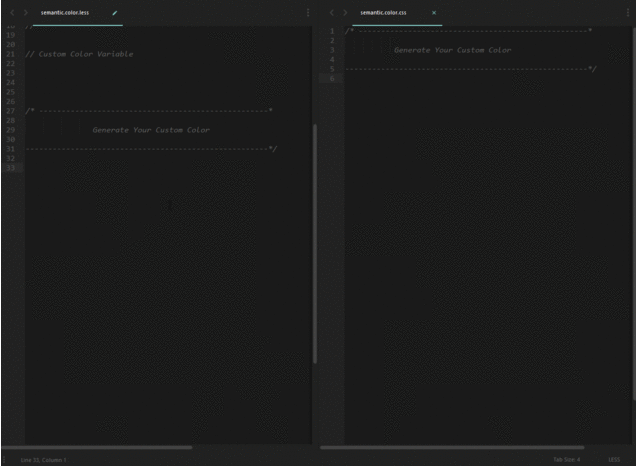You can call it a Less Parametric Mixin, but we prefer to call it a Generator!
Because you only need to define single line of code, so that you can achieved hundreds and more lines of code to get semantic-ui components colored and autogenerated.
Web Designer
If you are web designer, try this! and look how colorful person you'll be come.
Frontend Engineer
If you are a frontend engineer and believe that color play a crucial part of your visual artwork, this will fit on you!
Semantic-UI Addicts
If you aware that semantic-ui is great but lack of colors that fits to your need, you knew how to customize it but you're to lazy to do it. or maybe you've tried and finally back off confused with every chaining @variable been made, congrats! Yes, Obviously this meant for you!
In this demo page there are six new color newly created.
look custom color at left menu section
Those colors now available as new color class, I call it:
.flatgold
.concrete
.darkgreen
.autumnbrown
.darkblue&
.litecream.
For now we only need to write code below in semantic.color.less, and compile it. But
in real world you can do whatever you want, depend on how you integrate it to your project structure.

Basic Requirement
Before we started you need to check yourself
Start a project
Now that you're ready lets get started!
$ git clone https://github.com/sieteminerva/Semantic-UI-Color-Generator.git or
download
the source code
Because the dimmer.js code only manipulate the <div class="ui dimmer"></div>,
So it wont take any effect if you define it like this: <div class="ui flatgold dimmer"></div> in the Markup, instead you also need defining which color of dimmer you want to use in Variation Settings of your javascript code,
// So if you want flatgold dimmer define it like this
$('#containerWhereDimmerLives')
.dimmer({
on: 'hover',
variation: 'flatgold'
});
How to Customize it
For example:
There is a variable called
@prefix: .ui; modify it to
@prefix: .ui.yourThemeName;
Customize the CSS property of the selected component, dont forget to put !important; mark for overriding.
Compile it. and now .yourThemeName class automatically added into your generated component.
Then use it in your HTML markup <div class="ui yourThemeName red button">
In my case this approach more Clean and Easy for theming, without affecting the original version, and when semantic-ui got updated your site still up and running!